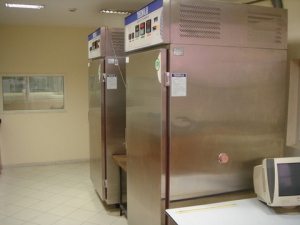
Stability testing is integral to developing new pharmaceutical products and active pharmaceutical ingredients, to establish their shelf life or expiry date. It is also equally important along with ongoing routine manufacturing to monitor product quality as a function of time. We provide a complete solution to your requirements of Stability Studies for Shelf-Life Estimation during
- Product Development
- Product Shelf life evaluation
- Packing Material development & change over
- For Product Registration in Global Markets
- Critical supplier change
Stability Study Protocols and Stability Studies Plan
We l design Plan & Protocols for Stability Studies according to the Current Regulatory Requirements for your products in Indian, ASEAN /CIS /Non-CIS/ GCC/ African/ UK /EU/ US regions.
Stability Study Sample management
We take responsibility for incubation of the samples, maintenance of the environmental conditions (Temperature and Humidity) and periodically withdrawal of within the stipulated time window for analysis and later compilation of the data for statistical evaluation to assign the shelf life.
Feedback on Packaging Material
We not only evaluate the degradation of Drug Substances or their degradation product but also let you know the possible interactions of Drug Substances with the Packaging material in which these will be delivered, transported and stored throughout shelf life.
Stability Indicating Analytical Methods
We shall develop, design & validate the Analytical method for required test parameters to be used during stability study and further Regulatory submissions.
Most Economic Package in Industry with Quality
Unparalleled, most competitive and quite flexible package according to your business needs.
Accelerated Stability Testing Lab
Stability of a product means how long that product can be kept under normal conditions without degradation. As time passes, visible changes may occur. The changes may be physical, chemical or microbiological. The composition of the product varies over a period of time. Stability of the product is affected by various environmental factors. Stability of a product mainly depends on temperature, humidity, photostability, processing, handling and storage conditions.
In the pharmaceutical industry, Stability Testing is mainly of two types-Real-time stability testing and Accelerated stability testing.
Accelerated Stability Testing is done to determine the shelf life of finished products. As per the result, the expiry date of a particular product is fixed. Pharmaceutical products are kept under accelerated conditions. The changes under extreme conditions like temperature, light intensity and humidity are monitored. The test results are compared with the specified standards. After assessing the result, the shelf life of the product is established.
On the basis of results, packaging materials and containers are selected for the drug substance. The product can be kept for a long time without compromising its quality.
Significance of Stability Testing Services
What Is Stability Testing?
Stability testing is the statistical analysis of how long a pharmaceutical product can be stored without any change in its original chemical composition.
Pharmaceutical products when stored for long durations tend to undergo changes and release byproducts. Stability testing provides evidence on how certain pharmaceutical drugs can be stored at room temperature and in controlled conditions.
Why should you go for the stability testing of your product?
The physical, chemical and microbial properties of a pharmaceutical product may change under extreme storage conditions. That’s why; the shelf-life of a product has been studied during the stability testing.
The pharmaceutical industry conducts this testing to develop a new product and establish the shelf-life of a product. Here’s why stability study is important for the pharmaceutical industry.
- Shelf-Life Determination: The quality of a pharmaceutical product varies with time under temperature, humidity and light intensity. Stability testing studies; how long a pharmaceutical product can be stored at normal and accelerated conditions without any degradation. This study helps to determine the shelf-life of that product. As per the report of the study, the expiry date of the product is fixed.
- Storage Condition Recommendation: Different products require different storage conditions. In the stability testing lab, storage conditions and changes in the substances are recorded. As per the stability study, the storage condition is recommended for a particular product.
- Elimination of Impurities: In stability testing, each ingredient has been analyzed under various environmental factors. So, it becomes easy to identify and eliminate any impurities that may be formed during the shelf life of the product.
- Product Development: Stability testing is a reliable way to study the effectiveness of a new product. This testing helps to assess the physical, chemical, therapeutic stability of a product. As per the study, R&D professionals redesign the existing product and develop a new product.
- Ensures Quality: Quality assurance is an integral part of the pharmaceutical industry. The product is kept under the influence of high stresses and the rate of decomposition is observed. Stability testing assures the purity of ingredients and the quality of the final product. The stability report ensures that the pharmaceutical product is fit for human consumption. This gives the companies the confidence to launch new products in the market. The chances of product recall may decrease.
- Packaging Material Selection: During stability testing, the pharmaceutical product is exposed to humidity and temperature. As per the effect of water activity and temperature on the product, packaging materials are chosen for the product. The ideal container must tolerate the stresses. The packaging should maintain the quality of the product during transportation and storage.
- Legal Approvals: Stability testing of the pharmaceutical products is required for regulatory approvals. If a product fails to meet the quality standards prescribed by ICH and WHO, the product will not get approval for commercialization.
How Do You Perform a Stability Test?
Stability testing tests the drug stability and monitors changes in physical, chemical, and microbial characteristics.
Physical Changes: With the stability test, researchers monitor changes in the physical attributes of the drug when stored for specified durations. Key changes that are monitored include the change in color, water content level, change in pH, change in viscosity, presence of crystalline substances, and its difference in dissolution and disintegration properties from the day it was packed.
Chemical Changes: The stability protocol for pharmaceutical products, when analyzing chemical evidence, is to look for the presence of residual solvents, related substances, and any degradation by-products along with assay.
Microbial Changes: Stability studies prove that pharmaceutical drugs, when stored for long periods at room temperature and in temperature-controlled conditions, can lead to a change in the microbial level. In microbial stability studies of drugs, researchers look for the presence of pathogenic microorganisms and the effectiveness of added microbial preservatives, and any impact on the efficiency of the drug.
Types of Stability Studies
Based on the nature of the test and the estimated shelf life periods of certain pharmaceutical drugs, various stability testing methods are used to arrive at statistical data points that help manufacturers release safe and tested products to the market for consumption.
The 4 widely practiced forms of stability testing are
Real-Time Stability Testing: This form of stability testing is conducted on drugs for the same duration as the recommended shelf life. In this, regular periodic tests are conducted and conclusive analysis is done for its composition, efficiency, and reaction to various conditions. The trend analysis from this periodic testing is compared with different batches and a linear conclusion is approached.
Retained Sample Stability Studies: This testing procedure is practiced for every marketed product that requires stability studies. In this, the stability of the drug is periodically inspected and is allowed a degradation percentage of 2-5. For example, if a pharmaceutical drug has a shelf life of 5 years, the drug is tested in its 3rd, 6th, 12th, 24th, 36th, 48th and 60th month and the changes in its physical, chemical, and microbial composition are noted and compared with the regulated permissible levels.
Cyclic Temperature Stress Testing: This testing procedure is not compulsory and drugs undergo this test on a case to case basis. In this, the minimum and maximum temperature conditions are mimicked in a controlled environment and the drugs are exposed to these conditions for 24 hours and the changes if any are noted.
Normally the drug undergoes 20 cycles of cyclic temperature stress testing before any conclusive analysis on its stability is made.
Accelerated Stability Testing: This is a form of shelf-life testing and is used to gain insights on the predicted shelf life of the drug. In this, the drug is exposed to more than ambient temperatures and the changes are noted. Earlier the drug used to be exposed to extreme conditions and the amount of heat required to cause chemical composition failure was noted. This information was used to extrapolate the shelf life and relative stability of the pharmaceutical product.
For statistical linearity, the drug is exposed to 4 different temperature conditions and the exposure to accelerated conditions after refrigeration is also noted. Now the protocols are simplified and based on target markets and storage conditions, single accelerated condition storage usually at 40 degree celsius and 75% Humidity is used as per ICH.
Guidelines by ICH to Conduct Stability Testing
The scope and ideal behind ICH stability testing guidelines are to understand the shelf life of pharmaceutical drugs after being stored in different levels of temperature, humidity, and light.
Batches: The batches selected for stability testing should be the same as the ones that are reserved for distribution. The batches tested should be the same as the ones used in clinical trials and post packaging. The batches used are to be monitored for a period of 12 months and for those that were not approved for mass consumption in its first evaluation should be monitored for longer intervals.
Packaging: The packaging used for testing pharmaceutical drugs should be the same as the ones used during clinical trials and production.
Test Procedure: The test procedure should entail everything from efficiency, growth of microbial by-products, the formation of degradation products, the formation of crystalline by-products, the viscosity of the chemical, formation of moisture/water, and the effectiveness of the drug.
Storage Conditions: The packaging material and the quality of the substance used while testing the product should be the same as the one submitted to the regulatory bodies in the clinical trials and production phase.
Our Services
If you want to introduce a new product in the market you must perform stability testing to ensure that your product is of utmost quality and safe for patients. As a member of a pharmaceutical industry, you must ensure that your product meets the specified standards. Our stability testing lab is well equipped with a wide range of analytic techniques. We work with top pharmaceutical companies in India.We are equipped with a comprehensive array of Analytical techniques, experienced team, Incubators GMP Models (Zone wise; according to current Regulatory requirements) and huge capacity for further expansion of storage capacities to meet all your stability testing needs.
Our experienced team of professionals helps the pharmaceutical companies to determine the shelf-life of their products. We offer comprehensive stability testing services at an affordable package.
Our laboratories in pan India locations offer Stability Testing within your budget. We can help you to improve the shelf life of your products.
Currently, we are handling projects for Pharmaceuticals Finished Products (API and Finished Products (all dosage forms), Ayurvedic/Herbal Products (Hard and Soft gelatin Capsule, Solid powder & Liquid ), Cosmetics and food Products.
We provide the most transparent, un-interrupted feedback for your technical needs. Our technical team works with our valuable clients in close relationship for successful and timely conduct of Stability Studies for Shelf Life estimation.
If you are looking for high quality and affordable stability testing services, call us at +91-8588851888.




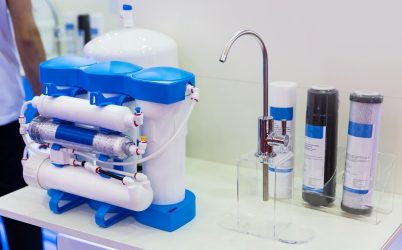

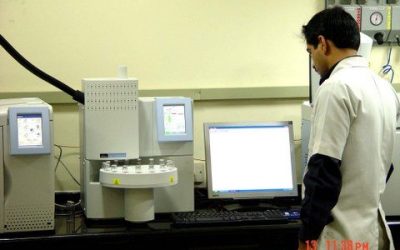

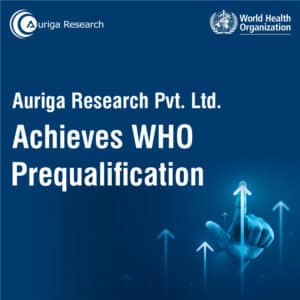


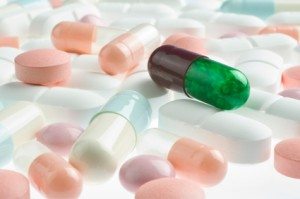
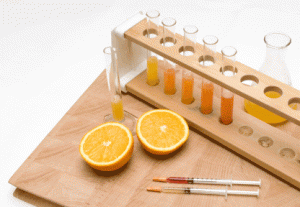

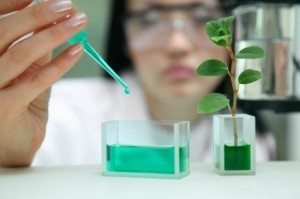


2 Responses
OTC Anticavity toothpaste (gel, contain fluoride) for US market.
Could you please let me know the following questions for stability testing?
1. How many batches used for long-term stability studies?
2. How many batches used for accelerated stability studies?
3. Will 3 Months or 6 Months period of accelerated stability studies used for releasing product and what shelf life can be estimated on the product label?
4. Please give me a quotation for stability testing of the toothpaste.
I am looking forward to your reply soon.
Dear Sombat Wanauppathamkul,
Thank you for your interest in stability testing for your OTC Anticavity Toothpaste gel. We’re diligently working on providing a comprehensive quotation to ensure the quality and safety of your product. Rest assured, our sales team will promptly communicate the details once ready. Appreciate your patience and understanding.